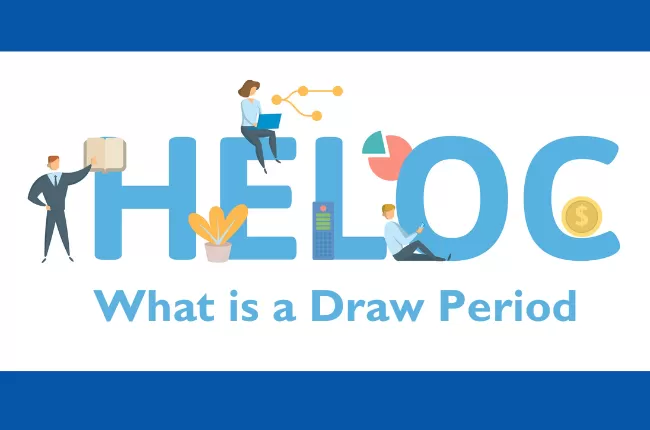What is a Draw Period - HELOCs Explained
The “draw period” of a Home Equity Line of Credit, or HELOC, refers to the initial phase of the loan during which the borrower can access the funds. This phase typically lasts from 5 to 10 years and allows the borrower the flexibility to withdraw money as needed.
During the draw period, borrowers are usually only required to make payments on the interest accrued, on the amount they have withdrawn, although they can choose to pay on the principal amount as well. This flexibility makes the HELOC a convenient option for homeowners who need funds for projects with variable costs or timelines. However, once the draw period ends, the loan enters the repayment phase, where the borrower must make payments on both the principal and the interest.
The "repayment phase" begins immediately after the draw period concludes. This phase can last up to 20 years, marking a significant shift in the borrower's payment obligations. During this time, borrowers are no longer allowed to withdraw funds from their HELOC and must start making regular payments on both the principal and the interest that has accumulated. The transition from interest-only payments or small principal payments to a combination of principal and interest payments can result in a substantial increase in monthly financial obligations. This change requires careful planning and budgeting from homeowners to manage their finances effectively without straining their resources. The repayment phase fundamentally aims to ensure that the loan is paid back in full by the end of the term, restoring the equity in the homeowner's property.
Best Practices for Budgeting and Preparing for the Repayment Phase
When preparing for the repayment phase of a HELOC, it's crucial to implement prudent budgeting practices to ensure financial stability. Here are several strategies to consider:
Early Repayment Planning
Start planning for the repayment phase during the draw period itself. Begin by gradually increasing your monthly payments to include a portion of the principal, if you haven't been doing so already. This proactive approach can significantly reduce the shock of increased payments later.
Budget Adjustment
Review and adjust your monthly budget to accommodate the expected increase in payment amounts. Identify areas where expenses can be minimized to free up more funds for your HELOC repayment. Consider using budgeting tools or apps to track your expenses more effectively.
Emergency Fund
Aim to build or maintain an emergency fund. Having savings equivalent to at least three to six months of living expenses can provide a financial cushion that helps manage unforeseen circumstances without needing to rely further on credit.
Consult a Financial Advisor
If you're unsure about the best strategy for your situation, consider consulting with a financial advisor. A professional can offer personalized advice based on your financial circumstances, goals, and the specifics of your HELOC.
By adopting these strategies, homeowners can better manage their finances and smoothly transition into the repayment phase of their HELOC, ensuring they maintain financial health and stability while paying down their debt.
At SCU Credit Union we offer our members home equity lines of credit and home equity loans with competitive rates and flexible terms. For Home Equity Lines of Credit, we lend up to 80% of the assessed value or up to 80% of the appraised value, whichever is less, minus the remaining balance on your first mortgage on 1-4 family owner occupied residences.
You can apply online or stop in at one of our branches for assistance or reach out to our member service call center at 781-784-7725 or toll free at 1-877-661-3300.
« Return to "Blog Home"

